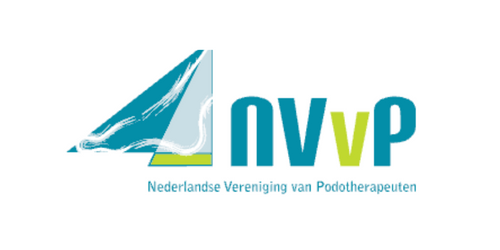BACKGROUND
The Dutch Association of Podiatrists (NVvP) is a professional association that guarantees the quality of podiatric care in the Netherlands and represents the collective and individual interests of all podiatrists in the Netherlands. An important area of focus within podiatry is the care for people with diabetes, who run a high risk of complications such as foot wounds. These complications can lead to amputations of the lower leg, which contributes to rising healthcare costs that have now risen to half a billion euros per year.
The NVvP and the parties involved want to demonstrate that podiatric care is valuable to patients by systematically evaluating this care and improving it where necessary. The goal is to focus more on prevention, so that, among other things, the number of amputations can be reduced annually. By keeping the condition of the patient with a diabetic foot stable and preventing further complications, the risk of amputations can be significantly reduced.
Although there is a need for evidence for effective and affordable care, there was no national dataset available for the diabetes population receiving podiatric care. The structured collection of the same variables and the safe collection of the data was a major challenge.
APPROACH
THE INITIATIVE: 'DATA WORKSHOP'
In June 2023, the NVvP, the podiatry practices Voetencentrum Wender, Hermanns and Innofeet, the Podiatry Lectorate (Saxion University of Applied Sciences/Fontys) launched the 'Data Workshop' initiative. The aim of this initiative is to use data to map the value of podiatric care and to systematically evaluate it. To this end, the Multi-Party Computation (MPC) technique from Roseman Labs is used, an advanced cryptographic technique. This technique makes it possible to securely bring together and analyse personal and medical data of patients from different practices, without violating privacy rules and without it being traceable to a specific practice. Several phases were completed within the 'Systematic evaluation' project.
FASE 1: CONSORTIUMVORMING
In the first phase, a Consortium Agreement was drawn up jointly with all parties involved. Legal questions such as ''Under what conditions do we enter into this collaboration?'', ''What is the purpose of this collaboration?'' and ''What roles will be fulfilled?'' were addressed. Due to the legal aspect, in which various parties were involved, this phase took a total of six months.
PHASE 2: PROJECT TARGETING DIABETES POPULATION
Parallel to phase 1, phase 2 was started, the start of the project. A pragmatic phase, in which it was first determined which basic information (set of variables) the different podiatric practices would collect together. This was then implemented in the electronic patient files (EPDs). After this, the datasets of all practices were extracted in encrypted form and an analysis script was written and run on the collected data. Executing analysis scripts was a complex procedure and required several iterations to execute the script correctly. Ultimately, three analysis scripts were executed successfully.
RESULT
This project has yielded multiple results. Firstly, there is now more insight into the patient population of people with diabetes who receive podiatric care. Secondly, it has become apparent that with the help of the MPC technique it is possible to safely combine personal and medical data of patients from different podiatry practices, without violating privacy regulations and without practices being able to view each other's data. In addition, it is possible to perform analyses on this central dataset that must be approved by all parties involved before they are run. The results enable podiatrists to gain valuable insights into the health status of patients and the care they need. Thirdly, with this unique collaboration and with the help of this MPC technique, the infrastructure has been created to evaluate podiatric care at a national level. These insights can make podiatric care more efficient in the future, which can both increase the quality of care and reduce healthcare costs.



